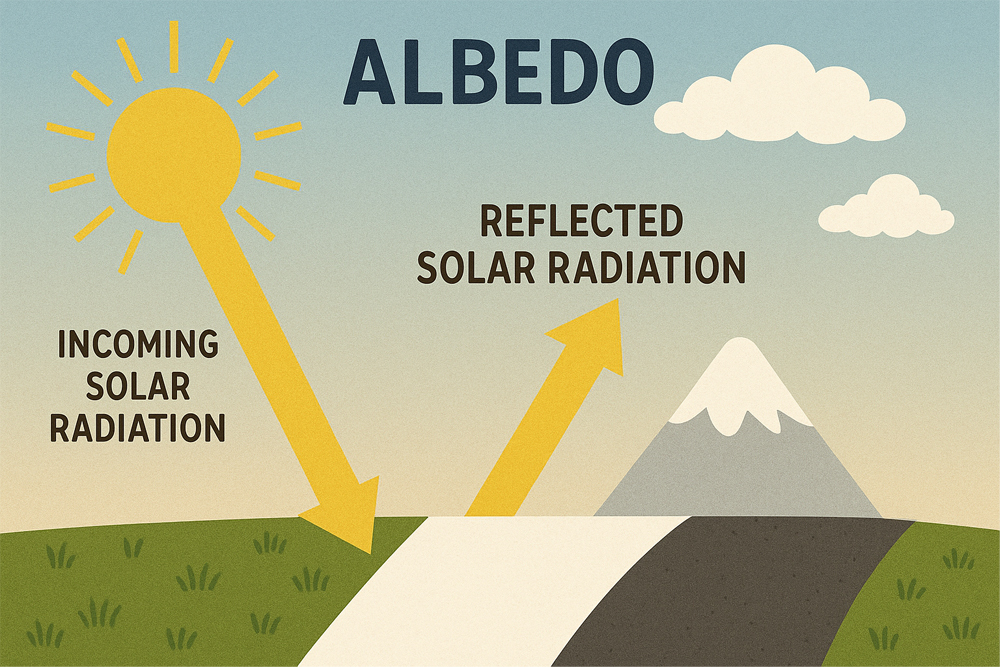What is Albedo?
Albedo refers to the fraction of sunlight a surface reflects, measured from a scale of 0 (total absorption) to 1 (total reflection). Darker surfaces (like asphalt, concrete and black paint) tend do be closer to 0, while lighter surfaces (like marble, white cladding and snow) tend to be closer to 1.

How Albedo Impacts Weather & Weather Forecasting
Albedo mainly impacts forecasted temperatures. Varying albedos within an area can create a temperature gradient, resulting in different temperatures and therefore differences in forecasts. Since albedo is a measure of how much sunlight is reflected, and therefore how much sunlight is stored, the effects of current weather can be amplified depending on the surrounding albedo. Albedo is also used in forecasting weather impacts such as rainfall patterns, snowmelt rates, and flood risks.
Changes in albedo can lead to long-term changes within the climate. For instance, replacing fields and trees with dark pavement and rooftops lowers albedo, creating a persistent urban heat island. Over years to decades, that added heat shifts local breezes and thunderstorm formation, changing downwind rainfall patterns.
